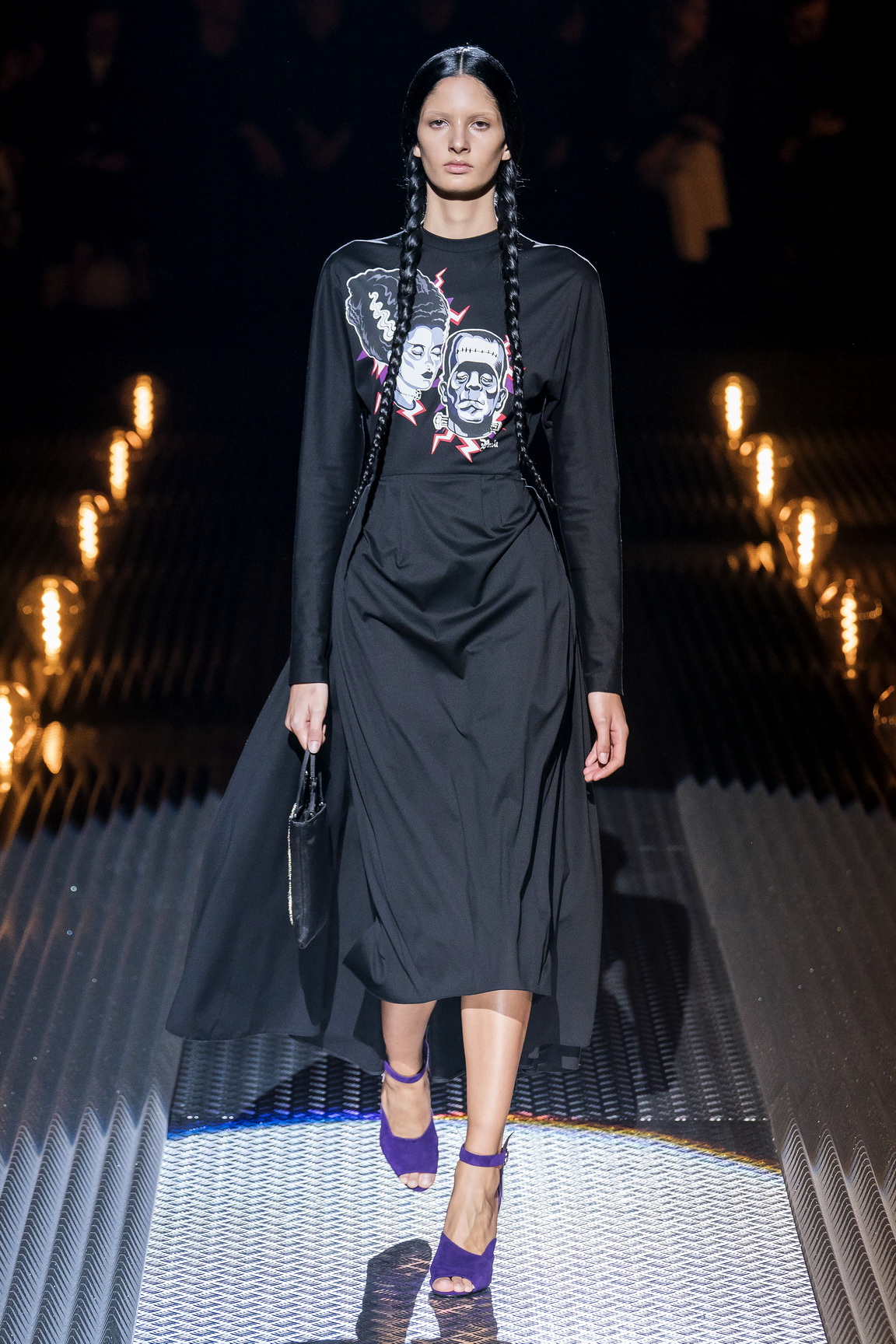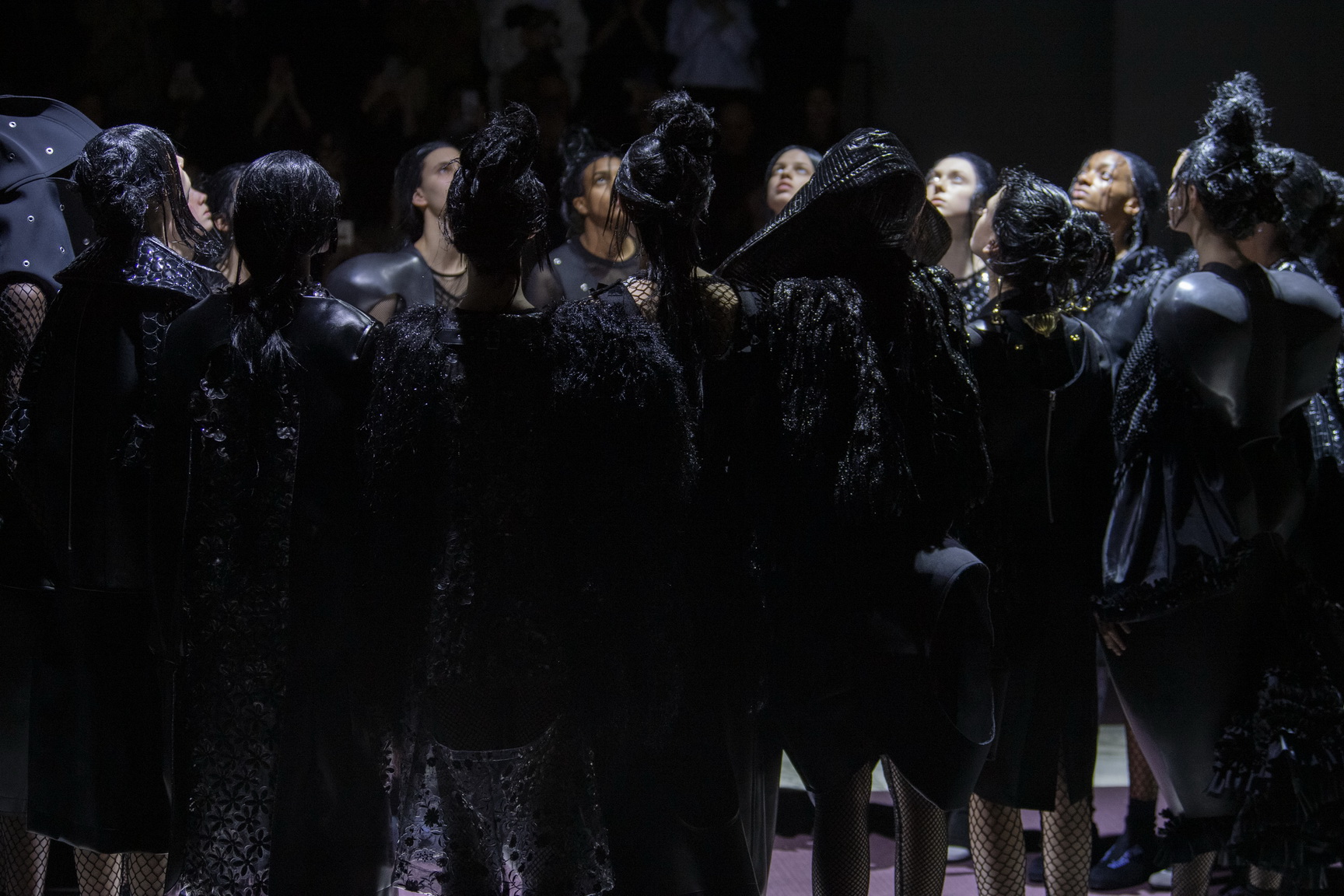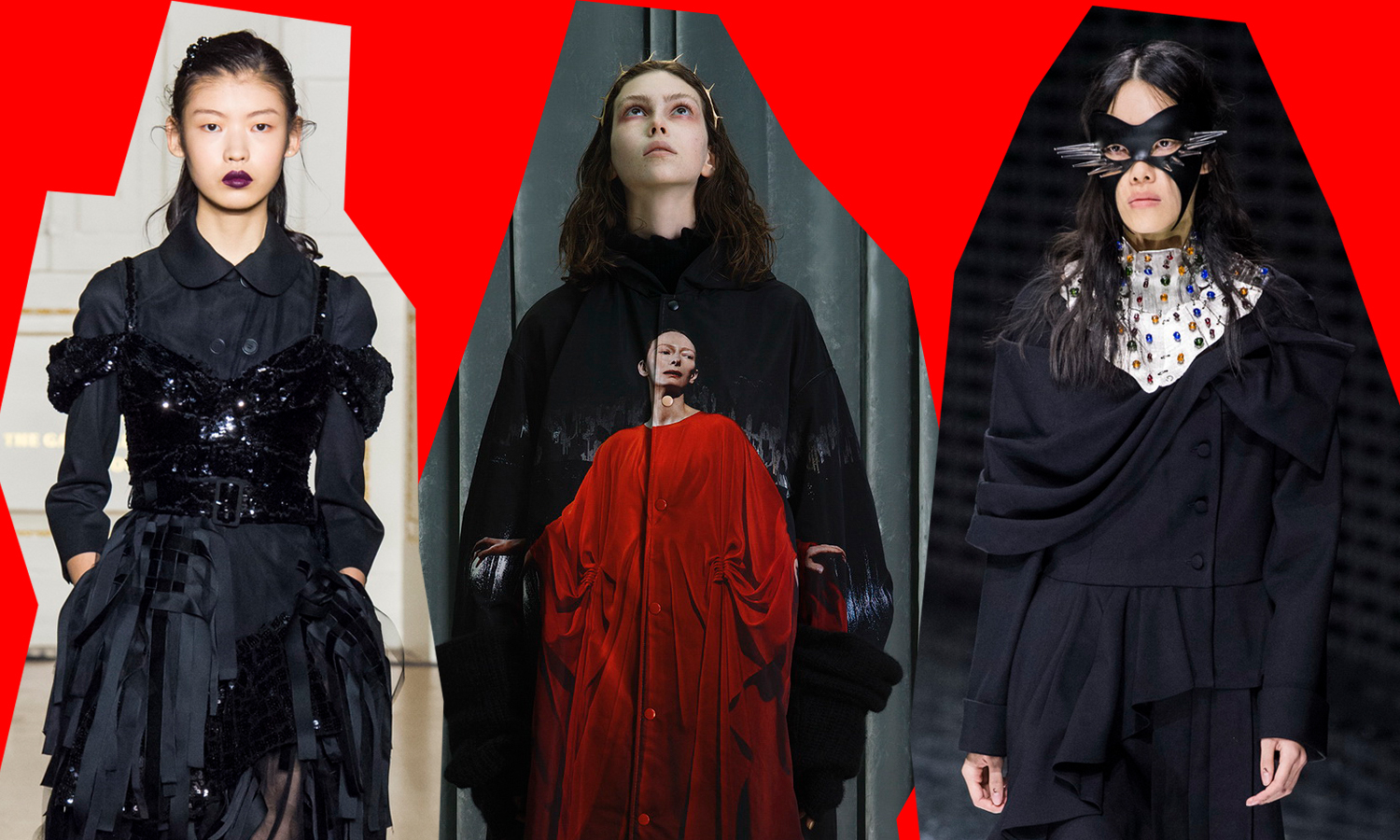Horror has an uncanny ability to hold up a mirror to the times we live in: from the slasher films pricking the cosy bubble of 70s baby boomer suburbia, to the lo-fi found footage 90s horror films providing hyperreal scares for desensitised millennials. Perhaps it’s little surprise — given the febrile state of western politics today — that we’re living in another golden age of horror, with a spate of recent movies that have managed to balance inventive storytelling, critical acclaim and blockbuster success, from A Quiet Place to Hereditary.
Yet for an industry that’s supposed to have its finger firmly on the pulse, fashion has been slow to tap into silver screen horror’s zeitgeisty potential. Perhaps in the wake of 2016’s political upheavals, an immediate deep dive into the world of horror would have felt a little overwrought. There have been notable exceptions — Raf Simons, for example, whose collections for Calvin Klein drew an implicit line between the grand canon of American horror and his status as an outsider in Trump’s America, or Undercover’s forays into the films of Stanley Kubrick over the past year. But it seems that this autumn, just in time for Halloween, horror is going to be hitting the shops just as forcefully as its been packing out cinemas.

Unsurprisingly, at the front of the pack came Prada, presenting a collection inspired by Frankenstein’s monster that managed to be both monstrously campy and surprisingly heartfelt. Staged in a cavernous industrial space within the Fondazione Prada, models walked out of the darkness and down an OMA-designed runway flanked by glimmering filament bulbs, sporting bleached eyebrows, Wednesday Addams pigtails and black lace galore. More literal, however, were the prints designed in collaboration with the illustrator Jeanne Detallante, featuring Boris Karloff’s Frankenstein alongside that perennial inspo for goth girl glamour, Elsa Lanchester as Frankenstein’s bride, with her signature Nefertiti-inspired updo and wiggly streak of bleach.
It isn’t surprising that Miuccia Prada — a well-known champion of women artists and intellectuals working today — would choose to look back to Mary Shelley, the daughter of a pioneering voice championing women’s rights, and a writer whose 1818 horror classic was disregarded by some contemporary critics as ‘feminine’ for its soul-searching take on the monster genre. The collection spoke of all of that and more, with the stand-out pieces of tailoring decorated with arrow-shot hearts touching on Frankenstein’s subtext of doomed love — a timely reminder that horror isn’t always about spooks and scares, but also a lesson in learning to love the outsider.

Despite Prada’s typically literary leanings, it was cinema that captured designers’ imaginations most strongly. Take Jun Takahashi’s collections for Undercover, which saw him reference The Shining with ghoulish pairs of twinning models for spring/summer 2018, or his men’s autumn/winter 2019 collection earlier this year that paid homage to A Clockwork Orange with its feathered caps and plague doctor masks. This time around, he paid direct reference to the spirit of horror revivalism that has swept through Hollywood over the past few years — see the blockbuster remakes of It and Halloween — by screen printing images from Luca Guadagnino’s recent remake of cult giallo horror classic Suspiria on hoodies, parkas and billowing skirts. Given Takahashi’s native Japan has its own grand tradition of bone-chilling horror, it’s interesting he has decided instead to look to European classics: perhaps as a foreign designer showing in Paris he has the outsider’s ability to see things more clearly than we can. And what he sees is something altogether, well, horrifying — even if he’s then repackaging these observations into horrifyingly desirable clothes.
There were plenty of other sightings of horror on the autumn/winter runways: Simone Rocha’s high gothic Victorian gowns for both her main line and her ongoing collaboration with Moncler, with the protective layers of distressed black tulle carrying more than an echo of the abject bodies of Louise Bourgeois, one of her creative heroes and a recurring presence on the moodboards of horror film art directors. For die-hard horror revivalists there were also the Friday the 13th-inspired hockey masks at Gucci, shown alongside jackets covered in dangerously sharp studs and even sharper power shoulders.
But one of the most incisive — and probably not by coincidence, one of the least literal — meditations on the relationship between horror films and our wardrobes came by way of Rei Kawakubo. At the finale of her Comme des Garçons womenswear show, titled ‘the gathering of shadows’, a procession of gowns came out crafted from distressed black felts and rubbery leathers, with pannier-like protrusions creating a warped vision of the female body that had more than a whisper of that most fashionable of horror stock characters: the witch. As the models gathered in a spotlit circle in the centre of the runway, you could be mistaken for thinking you were watching the teenage girls of Arthur Miller’s The Crucible gathering in the woods to perform their pagan ritual.

Miller’s play — again, like all the greatest works of horror — was a searing critique of McCarthyism, the government witch hunt throughout the 40s and 50s that aimed to root out communist sympathisers within the US. (Where have we heard the term ‘witch hunt’ recently?) Miller’s play — and Kawakubo’s nod to it — feels perfectly apt in an age of paranoia, misinformation and fear, where frenzied religious zeal has given way to toxic, anti-outsider rhetoric. So too has naming a powerful woman a witch become a common sexist insult hurled at female politicians: here, Kawakubo turned it on its head, creating a moment of quiet, meditative beauty as her own small coven of female outsiders gathered together in a circle.

The greatest moments in horror are the product of two factors meeting in perfect dissonance: first, the primal fears that provoke our caveman instincts to fight or flee — the lingering danger of a pitch-black night, or the feral growl of a monster coming to attack us in our sleep — and second, anxieties specific to the time we live in — genetically modified triffids, for example, or AIs that are ready to turn against us. Where else could this confluence of timelessness and the cutting-edge exist more tidily than in fashion? Fashion might have been a little slow to realise it, but horror seems to be its perfect bedfellow — even if the darkly desirable clothing produced by their marriage has some terrifying things to say about the world we live in.

